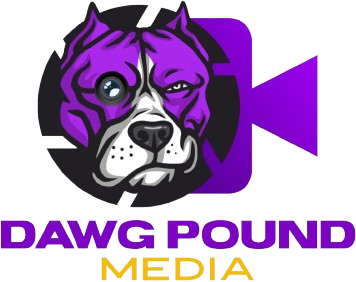The food industry—from farm to fork—relies on robust food safety practices to protect public health and maintain consumer trust. As we approach 2024-2025, new challenges and innovations are reshaping food safety standards worldwide. From advanced technology to heightened consumer expectations, understanding the latest trends is essential for businesses aiming to stay compliant and competitive. Here’s a look at the key food safety trends shaping the industry today and tomorrow.
1. Digital Transformation in Food Safety
The integration of technology in food safety management is revolutionizing how the industry operates. Businesses are adopting digital tools to streamline processes, enhance traceability, and improve compliance.
- Blockchain Technology: Blockchain ensures transparency in the food supply chain, allowing all stakeholders to trace products back to their source. This is particularly valuable for addressing recalls and verifying product authenticity.
- IoT Sensors: Internet of Things (IoT) devices monitor storage and transportation conditions in real-time, ensuring temperature, humidity, and other critical factors remain within safe limits.
- AI-Powered Analytics: Artificial intelligence analyzes data to predict risks, identify trends, and improve decision-making. AI tools help businesses proactively address food safety issues before they escalate.
2. Focus on Allergen Management
With food allergies on the rise globally, businesses are prioritizing allergen management to prevent cross-contamination and ensure consumer safety.
- Clearer Labeling: Enhanced packaging with detailed allergen information helps consumers make informed choices.
- Allergen-Free Zones: Establishing dedicated preparation areas in kitchens minimizes cross-contact.
- Employee Training: Comprehensive staff training ensures proper handling of allergenic ingredients and equipment.
3. Enhanced Traceability Systems
Traceability is no longer optional; it’s a regulatory and consumer-driven demand. Advances in technology are making it easier for businesses to track products throughout the supply chain.
- QR Codes: Scannable QR codes on packaging allow consumers to access detailed information about product origins and certifications.
- Real-Time Tracking: GPS and RFID technologies provide live updates on product locations during transit.
- Global Standards: Initiatives like the Global Food Safety Initiative (GFSI) are driving the adoption of standardized traceability protocols.
4. Sustainability Meets Food Safety
Sustainability is intersecting with food safety in innovative ways. Businesses are implementing eco-friendly practices while maintaining high safety standards.
- Reusable Packaging: Ensuring that reusable containers are sanitized and safe for use is a growing focus.
- Waste Reduction: Efficient inventory management and donation programs prevent food waste without compromising safety.
- Sustainable Sourcing: Verifying the safety of ingredients sourced from sustainable farms supports both environmental and consumer health goals.
5. Focus on Food Fraud Prevention
Food fraud—the intentional misrepresentation of products—poses a significant safety risk. Businesses are adopting measures to combat this issue.
- Authentication Technologies: DNA barcoding and spectroscopy verify the authenticity of food products.
- Supplier Audits: Rigorous vetting processes ensure that suppliers meet safety and quality standards.
- Consumer Education: Informing customers about potential fraud and how to identify safe products builds trust.
6. Adapting to Climate Change
Climate change is creating new challenges for food safety, from altering growing conditions to increasing the risk of contamination.
- Monitoring Emerging Risks: Shifts in weather patterns can introduce new pests and pathogens to food systems.
- Resilient Supply Chains: Diversifying suppliers and adopting adaptive practices help mitigate risks associated with climate-related disruptions.
- Temperature Control: Enhanced refrigeration and storage technologies ensure product safety in fluctuating climates.
7. Regulatory Changes and Compliance
Governments worldwide are updating food safety regulations to address modern challenges. Staying compliant is a top priority for businesses.
- FDA’s New Era of Smarter Food Safety: In the U.S., initiatives focus on technology-enabled traceability, smarter tools, and improved outbreak response.
- European Union’s Farm to Fork Strategy: Emphasizing sustainability and food safety, this framework sets ambitious goals for safe, healthy, and environmentally friendly food systems.
- Global Harmonization: International collaboration is driving consistent food safety standards across borders.
8. Rise of Alternative Proteins
Plant-based, lab-grown, and insect-based proteins are becoming mainstream, presenting unique food safety considerations.
- Novel Processing Techniques: Ensuring safe production methods for alternative proteins is critical.
- Consumer Education: Educating consumers about the safety and benefits of these proteins builds acceptance.
- Regulatory Oversight: Governments are establishing guidelines to address the safety of new food categories.
9. Public-Private Partnerships
Collaboration between governments, businesses, and NGOs is enhancing food safety efforts globally.
- Training Programs: Public-private initiatives provide education and resources to small and medium-sized enterprises (SMEs).
- Technology Sharing: Partnerships facilitate the adoption of cutting-edge technologies across the industry.
- Crisis Management: Collaborative approaches improve responses to foodborne illness outbreaks and contamination events.
10. Consumer Empowerment and Transparency
Today’s consumers demand more transparency about the food they eat. Businesses are responding by:
- Interactive Packaging: Enabling consumers to scan labels for detailed product information.
- Certifications: Displaying certifications like Organic, Non-GMO, and Fair Trade reassures customers of product integrity.
- Open Communication: Engaging with consumers on social media and other platforms fosters trust and loyalty.
Preparing for the Future of Food Safety
The landscape of food safety is dynamic, with challenges and innovations shaping its evolution. To stay ahead, businesses should:
- Invest in technology to improve efficiency and traceability.
- Foster a culture of continuous improvement and education among employees.
- Stay informed about regulatory updates and industry best practices.
- Embrace sustainability without compromising safety standards.
- Build trust through transparency and open communication.
Conclusion
Food safety trends in 2024-2025 are redefining how the industry operates, blending technology, sustainability, and consumer-centric approaches. By staying ahead of these trends, businesses can not only ensure compliance but also gain a competitive edge in an increasingly discerning market. As we look to the future, the commitment to food safety will remain a cornerstone of a thriving and trusted food system.


 More Feature News
More Feature News










